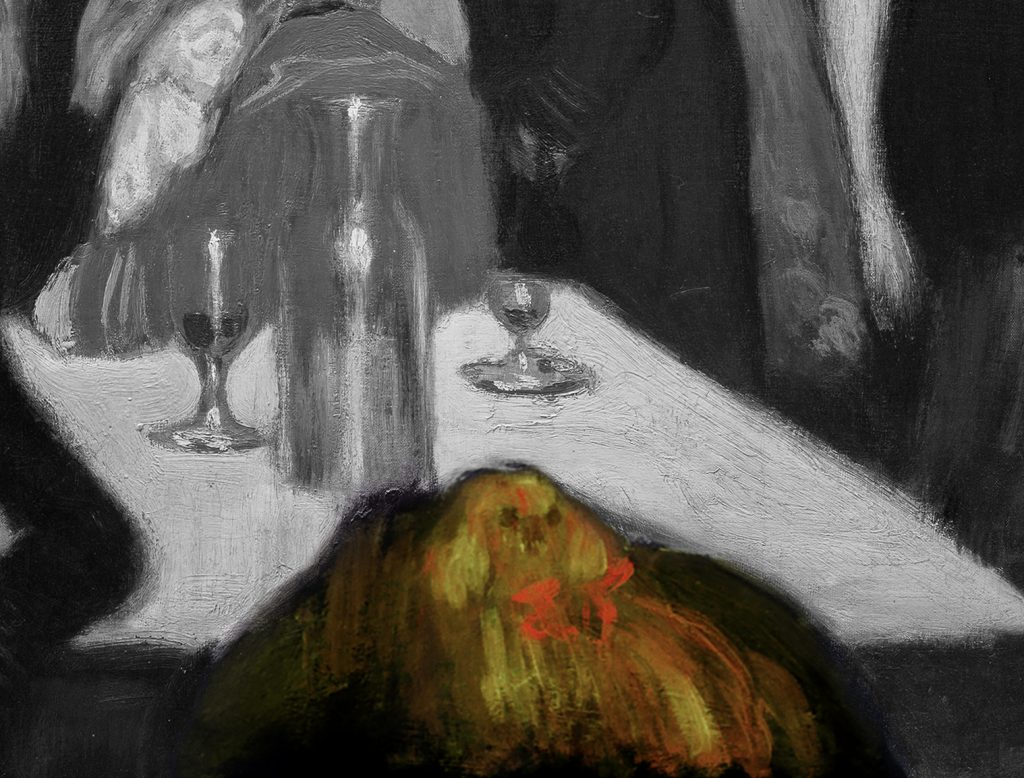Fifty years after his death, Picasso’s work still harbors thrills, such as the alleged image of a dog that a team of restorers has just discovered beneath the surface of his Paris night scene. The Moulin de la Galette (1900).
Picasso’s take on the titular hotspot of Bohemia is the centerpiece of ‘Young Picasso in Paris’, the Guggenheim’s contribution to world exhibitions commemorating the artist’s legacy this year. On view until August 7, the exhibition explores the artist’s love affair with the City of Light through 10 paintings and drawings he made during his first year in Paris.

Installation view of “Young Picasso in Paris” at the Solomon R. Guggenheim Museum. Photo: Midge Wattles © Solomon R. Guggenheim Foundation, New York.
Before putting The Moulin de la Galette Exhibited for the first time in 50 years, Guggenheim restorers collaborated with peers from the Metropolitan Museum of Art and the National Gallery of Art to clean dirt from the painting and delve into its history.
The technology they used is not too new. In fact, a 2017 X-ray of this work showed that Picasso had reversed the gender presentations of two figures, to the right of the scene. Latest efforts, however, have combined X-ray fluorescence with infrared and visible reflectance to create a false-color image of the artwork’s red, white, and yellow pigments. The use of more than one methodology revealed unseen subtleties in the artist’s technical approach, alongside faded components like a King Charles Spaniel, hidden under a semi-transparent stain.

Detail of the lower left corner of Picasso The Moulin de la Galette, with an inset-optimized false-color image approximating the appearance of the underlying dog that Picasso eventually hid. Images by Elena Basso, Silvia Centeno, John Delaney © 2023 Estate of Pablo Picasso / Artists Rights Society (ARS), New York.
“It would not have been unusual for dogs, especially small lapdogs, to be present in the dance halls of Montmartre,” curator Megan Fontanella told Artnet News. Another street scene from the same year titled Exit from the Universal Exhibition in Paris features two dogs visible in the foreground.
Why would Picasso remove such an adorable feature from The Moulin de la Galette remains unclear, especially when his ardor for his own dog Lump is well known. Most theories point to aesthetics: the direct gaze and debonair red bow of this spectacular creature would draw attention on sight, distracting from the whirlwind of revelers.
“Leaving behind clues or remnants of his compositional changes, it could just be Picasso working in haste and not always bothering to completely obscure his reworkings,” Fontanella mused. Perhaps the artist took pleasure in leaving clues. “Picasso, 19, could hardly have imagined that scientific advances would present us today with the ability to visualize, through technical imagery, his underlying compositions,” she said.
Julie Barten, the Guggenheim’s senior painting conservator who led this project, noted that while they do not plan deep dives into additional paintings throughout this show, “conservation scientists continue to uncover new more and more examples of compositions reworked by Picasso, so further finds are indeed likely.
“The young Picasso in Parisis on display at the Solomon R. Guggenheim Museum, 1071 Fifth Avenue, New York, through August 7.
Follow Artnet News on Facebook:
Want to stay one step ahead of the art world? Subscribe to our newsletter to receive breaking news, revealing interviews and incisive reviews that move the conversation forward.
